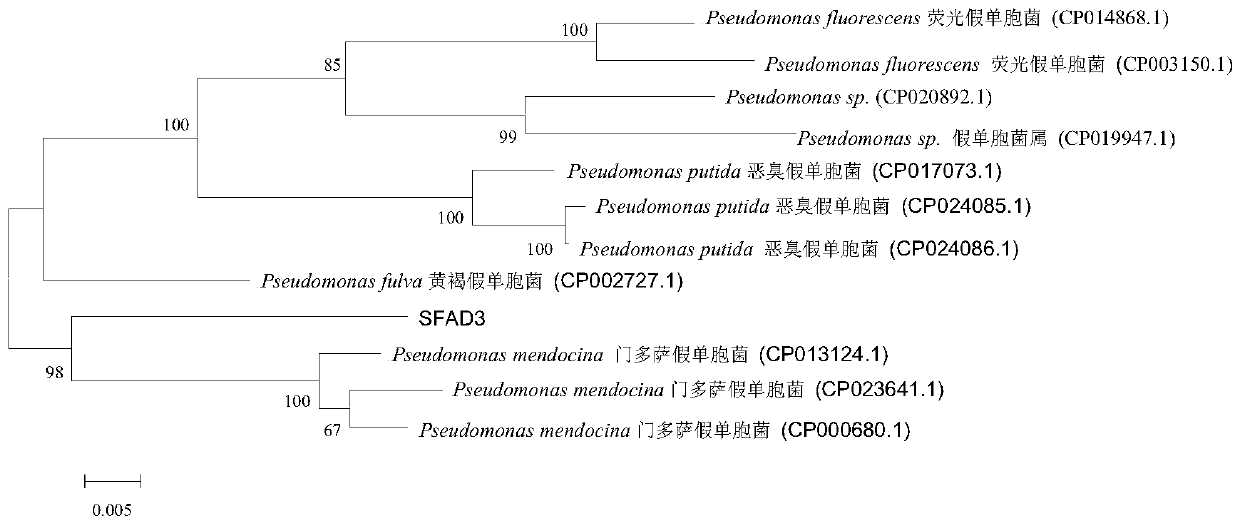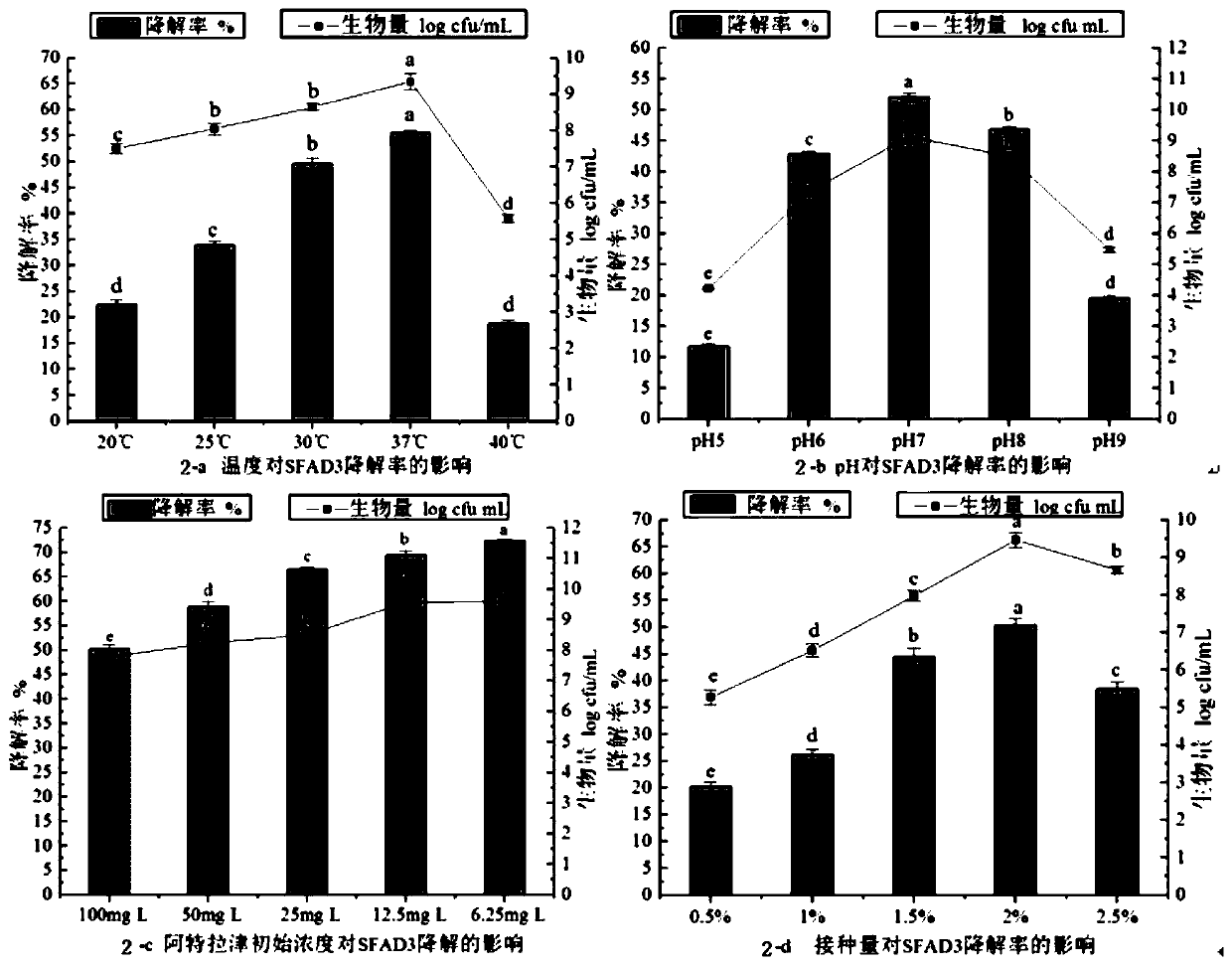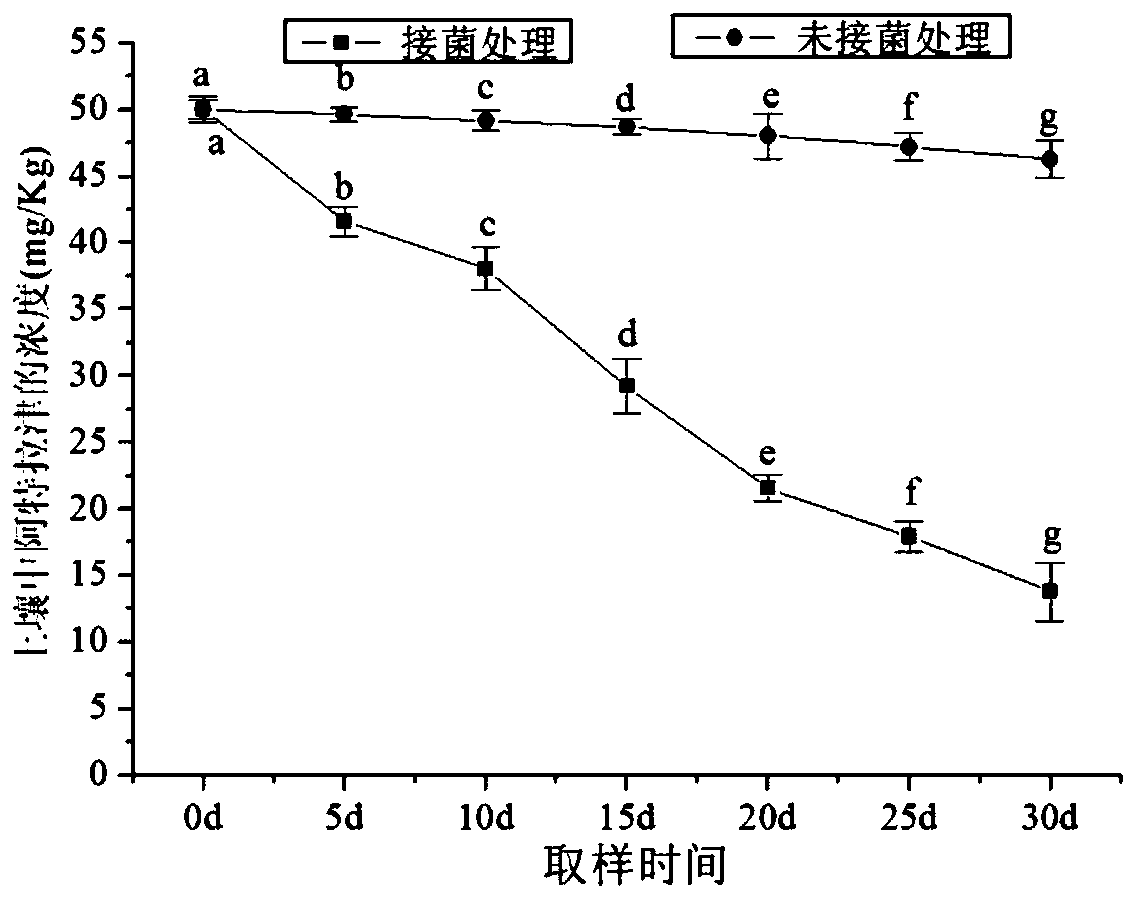Pseudomonas mendocina capable of effectively degrading atrazine and application of Pseudomonas mendocina
A technology of atrazine and monas, which is applied in the field of bioremediation to achieve good repair effect and obvious effect of promoting growth
- Summary
- Abstract
- Description
- Claims
- Application Information
AI Technical Summary
Problems solved by technology
Method used
Image
Examples
Embodiment 1
[0029] Example 1: Screening of atrazine-degrading bacteria
[0030] Screening method: Collect soil in the cornfield of Yuanyang Experimental Base of Henan Academy of Agricultural Sciences, take 10g of soil sample, add it to the basal salt medium (100mL) containing atrazine 10mg / L, mix well, and heat at 30°C , 180r / min shaking culture; every 7d, transfer the culture to the basal salt medium with increasing concentration of arazine at a transfer rate of 10%, and the concentration of alatazine in the basal salt medium is 10mg / L and 20mg respectively / L, 30mg / L, 50mg / L, 100mg / L; when the concentration of atrazine was 100mg / L, the enrichment culture was diluted to 10 -1 、10 -2 、10 -3 、10 -4 、10 -5 Five concentrations, 100 μL of each concentration were spread on the solid basic salt culture plate containing atrazine 100mg / L, and the plate was placed in a 30°C incubator for culture. After 3-5 days of culture, pick out the hydrolysis circle The colonies were isolated and purified...
Embodiment 2
[0032] Example 2: Degradation Ability Determination of Strain SFAD3
[0033] Pick a single colony of SFAD3 and inoculate it in LB liquid medium, culture at 30°C with shaking at 200r / min for 16-20 hours; take the cultured bacteria liquid overnight, centrifuge at 4000r / min for 10min, discard the supernatant, and wash 3 times with basic salt medium ; Precipitate with basal salt medium prepared to 1 × 10 9 cfu / mL bacterial suspension. The bacterial suspension was added to the basal salt medium containing 100mg / L atrazine at an inoculated amount of 2%, cultured with shaking at 30°C and 180r / min, and no inoculation was set as the control, with 3 replicates each. Samples were taken when culturing 3d, 6d, 9d, 12d, and 15d respectively, extracted 3 times with dichloromethane, and the volume of dichloromethane was 50%, 20%, and 20% of the sample volume in turn, the extract was evaporated to dryness, and methanol ( High performance liquid chromatography grade) was dissolved, and the vo...
Embodiment 3
[0038] Example 3: Morphological observation and physiological and biochemical identification of bacterial strain SFAD3
[0039] The colony morphology of SFAD3 grown on the LB plate was observed, and the characteristics of the bacteria were observed by Gram staining; the physiological and biochemical indicators of the strain were determined according to "Berger's Bacterial Identification Manual" (Eighth Edition).
[0040] The morphological observation of the strain SFAD3 showed that the colonies of SFAD3 on the LB medium were viscous, shiny, opaque, with smooth surfaces, irregular edges, light yellow colonies, and no pigmentation; Gram staining was negative, no spores, and the cells were short. Rod-shaped; the physiological and biochemical assay results of SFAD3 are shown in Table 2, methyl red reaction, gelatin hydrolysis test, starch hydrolysis test, chitin hydrolysis test, cellulose hydrolysis test and tyrosine hydrolysis test are all negative, peroxidation The hydrogenase t...
PUM
 Login to View More
Login to View More Abstract
Description
Claims
Application Information
 Login to View More
Login to View More - R&D
- Intellectual Property
- Life Sciences
- Materials
- Tech Scout
- Unparalleled Data Quality
- Higher Quality Content
- 60% Fewer Hallucinations
Browse by: Latest US Patents, China's latest patents, Technical Efficacy Thesaurus, Application Domain, Technology Topic, Popular Technical Reports.
© 2025 PatSnap. All rights reserved.Legal|Privacy policy|Modern Slavery Act Transparency Statement|Sitemap|About US| Contact US: help@patsnap.com



